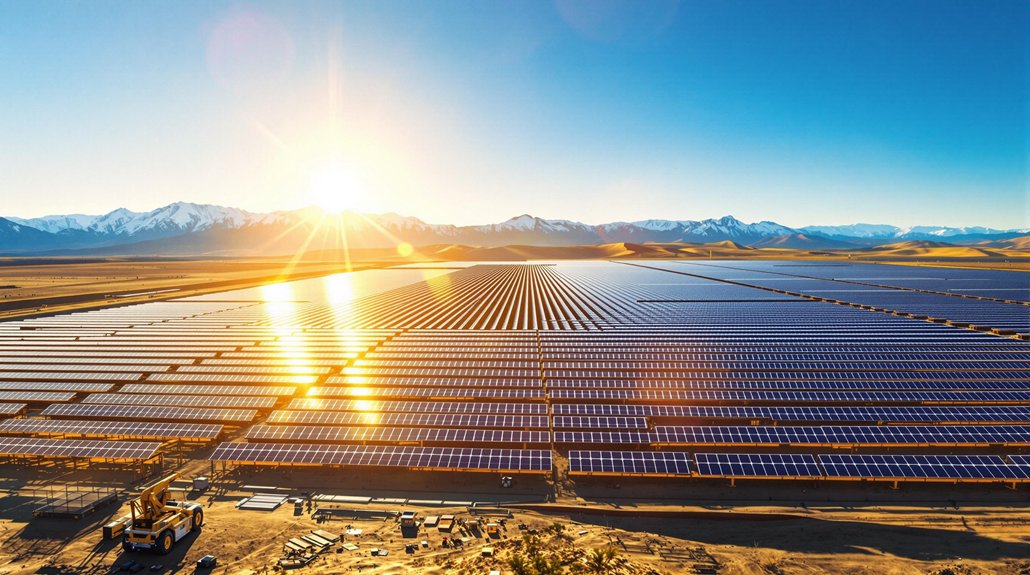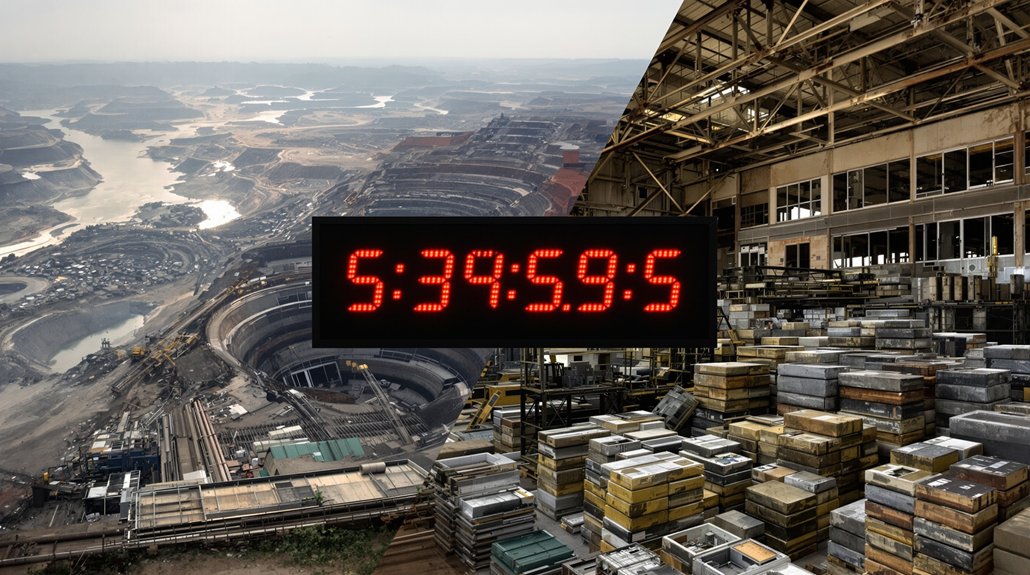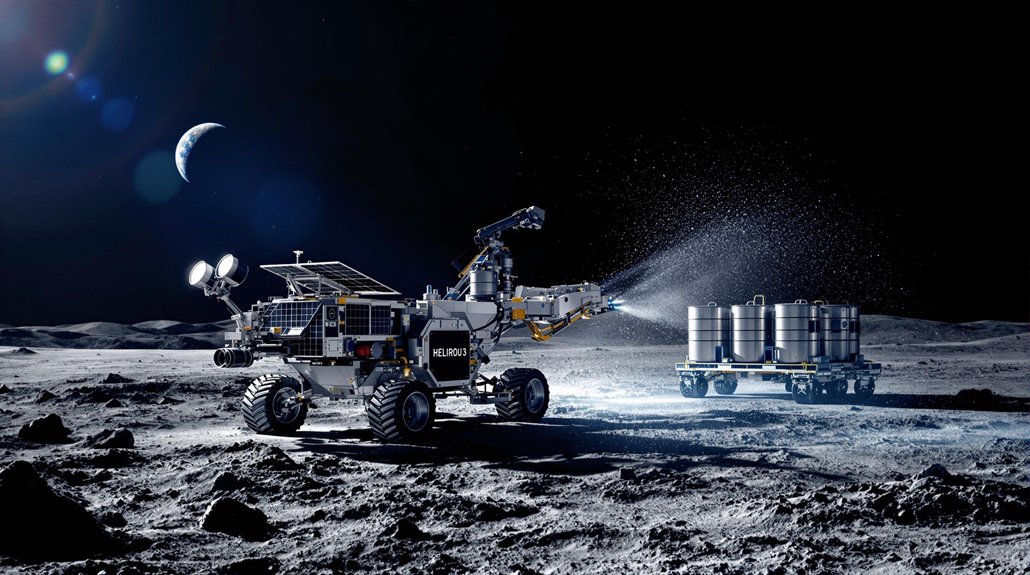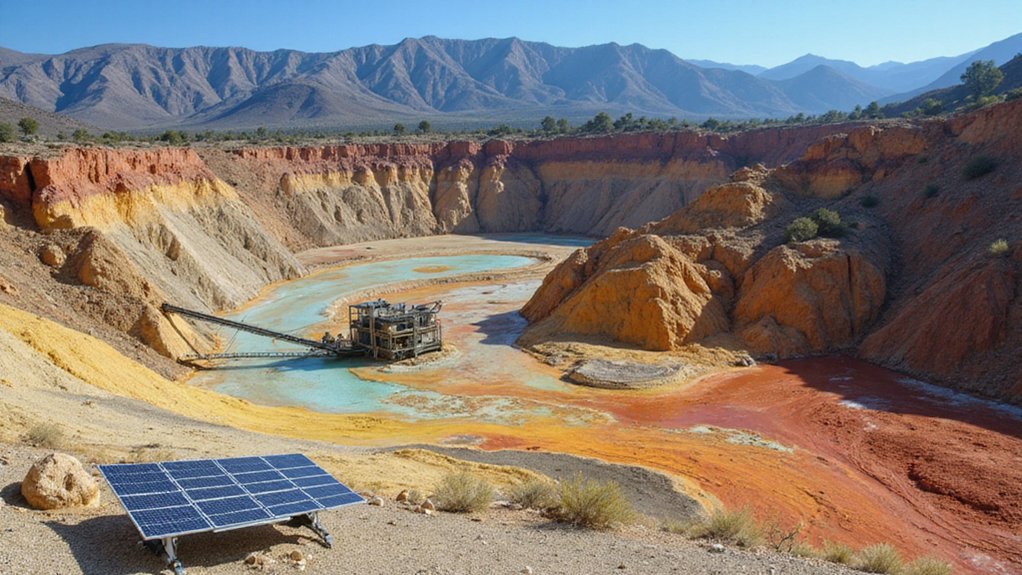America’s coastlines hide 37 crucial minerals essential for modern tech. No joke – we’re talking billions in untapped resources just 3-200 miles offshore. Meanwhile, the U.S. imports its entire supply of 12 critical minerals, mostly from China. Talk about national security nightmare. Environmental concerns exist, sure, but alternative extraction methods show promise. The race is on while bureaucrats dawdle and China sprints ahead. The future of American tech independence waits beneath the waves.
While the U.S. scours the globe for vital minerals, billions of dollars’ worth sit untapped along America’s vast coastlines. Seriously, we’re talking about 37 of the 50 minerals the USGS considers vital—just sitting there on the Outer Continental Shelf, mocking us while we write checks to other countries. That continental shelf extends from three to 200 nautical miles offshore. It’s American territory, yet we’re acting like it doesn’t exist.
Last year, America imported its entire supply of 12 vital minerals. Not just some—all of them. And we bought at least half our supply of 29 others from foreign sources. Meanwhile, China’s laughing all the way to the bank.
America’s mineral dependency is a national security crisis while China strengthens its global resource dominance.
These offshore deposits aren’t just in one spot. They’re scattered across different depths and formations. Nearshore minerals sit in shallow waters less than 200 meters deep. Deeper down, between 800 and 7,000 meters, you’ll find everything from ferromanganese crusts to polymetallic nodules. Each loaded with elements essential for our tech future.
Without lithium, graphite, and rare earth elements, you can kiss the clean energy shift goodbye. No lithium-ion batteries. No electric vehicle motors. No solar panels. The demand for these materials will skyrocket as green tech expands. Basic economics.
The government isn’t completely asleep at the wheel. The Earth Mapping Resources Initiative and National Offshore Critical Minerals Inventory are attempting to catalog what we have. But we’re falling behind in actual production planning. A good research approach would be to consult primary sources like geological surveys and eyewitness accounts from exploration teams for the most reliable information.
Environmental concerns are real. Mining isn’t pretty. The average new mine takes 16 years to open, partly because of public opposition and permit delays. The Biden Administration canceled several mining permits, we’ll see what the new administration does. One promising alternative is extracting minerals from seaweed, which can filter and concentrate metals to levels a million times higher than in surrounding seawater.
Meanwhile, we’re forming polite international partnerships like the Critical Minerals Mapping Initiative with Canada and Australia. Nice idea, but China’s not waiting around for our bureaucracy to catch up.
The clock’s ticking. Our shorelines hold the keys to technological independence, but only if we decide to use them. Time to get serious or get comfortable being dependent on others.








